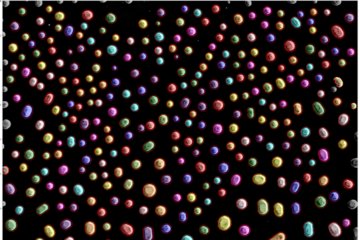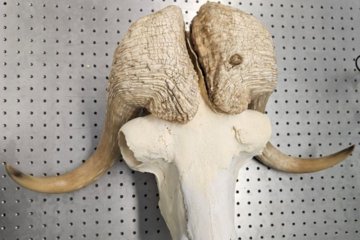All genres
441.
Talk
A Slip Interaction Based Measure of Damage Nucleation in Grain Boundaries. 3rd International Conference on Multiscale Materials Modeling, Freiburg, Germany (2006)
442.
Talk
Spherical indentation modeling for the investigation of primary recrystallization in a single-crystal nickel-base superalloy. Plasticity, Halifax, Canada (2006)
443.
Talk
Slip Interactions Leading to Damage Nucleation in Grain Boundaries. Plasticity Conference 2006, Halifax, Canada (2006)
444.
Talk
3D EBSD characterization and crystal plasticity FE simulation of the texture and microstructure below a nanoindent in Cu. Plasticity Conference 2006, Halifax, Canada (2006)
445.
Talk
A Dislocation Density Based Constitutive Law for BCC Materials in Crystal Plasticity FEM. THERMEC, Vancouver, Canada (2006)
446.
Talk
Micomechanical Modeling of large plastic deformation in semi-crystalline polymers. Plasticity, Halifax, Canada (2006)
447.
Talk
Mechanism-oriented steel development. New Methods of Steel Design, Aachen, Germany (2006)
448.
Talk
Physikalische Modelle für die Umformsimulation. Warumformtag II, Düsseldorf (2006)
449.
Talk
Microstructure Physics Based Concepts for the Simulation of Modern Steels. Robust Processes with Modern Steels, Berlin, Germany (2006)
450.
Talk
Mapping the crystal orientation distribution function to discrete orientations in crystal plasticity finite element forming simulations of bulk materials. International Conference on Aluminium Alloys ICAA10, Vancouver, Canada (2006)
451.
Talk
A grain boundary mechanism for nonlocal constitutive laws in crystal plasticity finite element simulations. DPG Frühjahrstagung, Dresden, Germany (2006)
452.
Talk
Crystal plasticity FEM modeling at large scales and at small scales. GAMM annual meeting, Berlin, Germany (2006)
453.
Talk
Three dimensional investigation of the texture and microstructure below a nanoindent in a Cu single crystal using 3D EBSD and crystal plasticity finite element simulations. DPG Frühjahrstagung, Dresden, Germany (2006)
454.
Talk
A dislocation density based constitutive law for BCC materials in crystal plasticity FEM. 15th International Workshop on Computational Mechanics of Materials, MPI für Eisenforschung, Düsseldorf (2005)
455.
Talk
The 15th International Workshop on Computational Mechanics of Materials (IWCMM 15). The 15th International Workshop on Computational Mechanics of Materials (IWCMM 15), MPIE (2005)
456.
Talk
A dislocation density based constitutive model for crystal plasticity FEM. 14th International Conference on Textures of Materials (ICOTOM 14), Leuven, Belgium (2005)
457.
Talk
A Texture Evolution Study Using the Texture Component Crystal Plasticity FEM. 14th International Conference on Textures of Materials (ICOTOM 14), Leuven, Belgium (2005)
458.
Talk
Introducing the Effect of Grain Boundaries into Crystal Plasticity FEM Using a Non Local Dislocation Density Based Constitutive Model. Theory and Application to FCC Bi-Crystals. Euromech Colloquium 463: Size dependent mechanics of materials, Groningen, Niederlande (2005)
459.
Talk
Crystal plasticity modeling at small scales and at large scales. GeoMat 2005, Aachen, Germany (2005)
460.
Talk
Development of a dislocation density based constitutive model for crystal plasticity FEM with special regard to grain boundaries. Institutsseminar, MPI für Mathematik in den Naturwissenschaften, Leipzig, Germany (2005)










